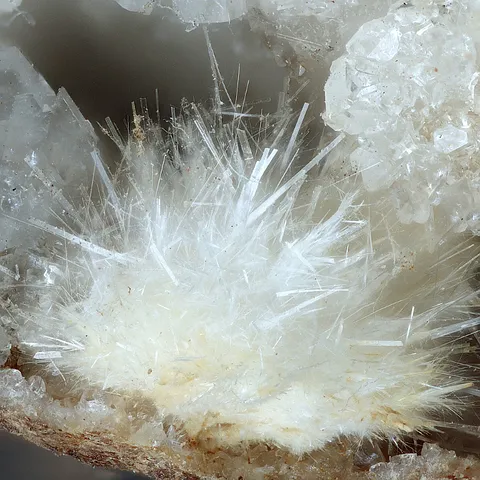BAVENITE
Class : Silicates
Subclass : Inosilicates
Crystal System : Orthorhombic
Chemistry : Ca4Be2Al2Si9O26(OH)2
Rarity : Fairly common
Bavenite is a secondary beryllium silicate present in the vacuoles of granites and granitic pegmatites, where it is formed by weathering of beryl. More rarely, it is found in alkaline syenite skarns (Ilimaussaq, Greenland), as a product of helvite alteration, and in hydrothermal veins. It is evident a usual companion of primary beryllium silicates, especially beryl. Its name comes from its locality of discovery : Baveno, near Lake Maggiore (Italy). The crystals are elongated prisms united in radial aggregates reaching 6 cm, lamellae grouped in rosettes or needles assembled in fibrous to compact aggregates ; bavenite also forms masses of chalky appearance. It is a colorless to white mineral, sometimes slightly reddish, greenish or light brown.
Main photo : Bavenite from Seula mine, Mount Camoscio, Oltrefiume, Baveno, Piedmont, Italy © Gianfranco Ciccolini
Bavenite in the World
Twinning and special crystallizations
Twins are known on {100}.
Fakes and treatments
No fake or treatment identified for this mineral species.
Hardness : 5.5
Density : 2.7
Fracture : Irregular
Trace : White
TP : Translucent to transparent
RI : 1.578 to 1.593
Birefringence : 0.005 to 0.007
Optical character : Biaxial +
Pleochroism : None
Fluorescence : None
Solubility : Insoluble
Magnetism : None
Radioactivity : None





